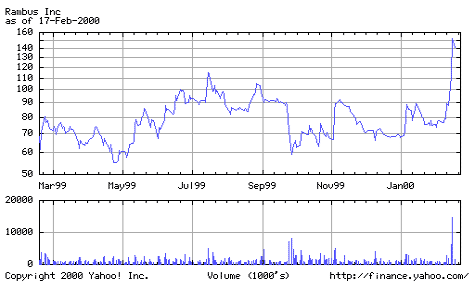Intel heeft op het Intel Developer Forum laten weten dat het voor de Willamette ('Willy') volledig op een Rambus-only strategie mikt. Eerder dit jaar leek het er nog op dat Rambus geleidelijk zou worden gedropt door Intel, maar daar is nu totaal geen sprake meer van. Willy zal gebruik maken van de Tahema chipset, een doorontwikkeling van de i840 chipset met dual Rambus interface. Bij gebruik van 2 RIMMs geeft dit een maximale geheugen bandwidth van maar liefst 3,2GByte/s. De geheugen bandbreedte is hiermee perfect in evenwicht met de bandbreedte van de 'quad pumped' data bus waarop Willy met de north bridge mag communiceren. EETimes schrijft dat Willy volgens Intel dankzij dual Rambus 10 tot 30% sneller is dan een config met SDRAM:
For the Willamette processor generation, which moves to clock speeds of 1.5 GHz and beyond, Intel is projecting that the dual-channel Rambus approach will prove its worth, delivering 10 percent to 30 percent performance improvements as measured across a suite of benchmarks.As Rambus Inc. chief executive officer Geoff Tate asked, "Why would a user want to buy a system based on a Willamette processor and then give up 10 percent to 30 percent performance by matching that with SDRAMs?"
But SDRAM technology isn't standing still, said Bert McComas, principal analyst at InQuest (Gilbert, Ariz.). The PC266 double-date-rate (DDR) SDRAMs will come closer to keeping up with Rambus than Intel's benchmarks indicate, he said. After that comes a seamless transition to the DDR-2 technology, the specifications for which are now being finalized
By not supporting SDRAMs with Willamette, "Intel has left itself open to [Advanced Micro Devices'] Athlon coming in under Willamette and filling a huge market space" in terms of cost/performance, McComas said.
Effectenhandelen reageerden direkt op het nieuws dat 'Willy alleen werkt met Rambus', zij begonnen massaal Rambus aandelen binnen te hamsteren:


